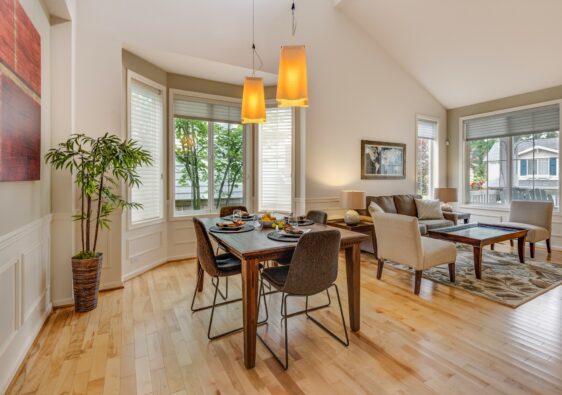This article will help you understand the width of twin beds, including how they compare to other bed sizes, and who they are best suited for. We will cover key dimensions, explain the differences between twin and twin XL beds, and offer advice on choosing the best bed for your room layout. Along the way, we will also introduce a good resource for baby care with a baby noise machine to help families create a peaceful environment. Whether you need a bed for a child’s room, a guest space, or a small apartment, knowing the width of a twin bed and its features will guide your choice.
The Standard Width of a Twin Bed
A twin bed is commonly known as one of the smallest sizes for single beds. The typical width of a standard twin bed is around 38 inches. That size makes it slim enough to fit into tight spaces but still wide enough for a person to sleep comfortably.
- Width: 38 inches (approx. 96.5 cm)
- Length: 75 inches (approx. 191 cm)
- Suitable for single sleepers or kids
With this dimension, the bed can be easily accommodated in small rooms, dorms, or apartments. It provides enough space for most children and a good number of adults who are used to sleeping in a small space.
Understanding Twin vs. Twin XL Dimensions
Besides that, a twin XL bed is available, which is generally meant for tall people. The twin XL is of the same width of 38 inches, but is longer:
- Twin XL length: 80 inches (about 203 cm), five inches longer than a standard twin
- The additional length is perfect for teenagers or grown-ups who require more leg space.
While both twin and twin XL beds have the same width of 38 inches, the decision of which one to pick will mostly be determined by your height and the length of the room.
Who is a Twin Bed best Suited For?
The dimensions and width of a twin bed are perfect for:
- Children growing up who have moved out of cribs
- Youngsters who require a narrower bed
- Single adults who reside in small apartments or rooms
- Rooms for guests or places where additional beds are necessary, but there is little space
Apart from its limited width, the twin bed is still big enough for a single person, and at the same time, it saves floor space for other furniture.
Considering Your Room Size and Layout
If the floor space of your room is limited, a twin bed’s width is suitable for small rooms or spaces that are tight with floor area. To find out if a twin bed fits your room, you might want to look at:
- The room’s total area in square feet
- The location of the doors and windows
- The other furniture pieces, such as desks or dressers
- Movement space next to the bed (24 inches around for walking and comfort is perfect)
As twin beds take up less floor space, they allow for a play or study area to be left, which is very useful for children’s bedrooms.
The Advantages of Choosing a Twin Bed
There are several advantages that you can get from choosing a 38-inch wide twin bed:
- Conserves space in small rooms
- Generally cheaper than larger beds
- It is convenient and easy to move
- There are more mattress varieties
- Comes with standard twin-sized bedding, which is easily found in stores
- Helps keep bedrooms from being messy and disorganized
These benefits make a twin bed the favorite option among parents who are planning children’s rooms and anyone who wants a functional single bed.
The Disadvantages and When to Go Bigger
A twin bed is full of positives, but there are times when a larger bed would be better:
- As a twin bed is only 38 inches wide, if you share your bed with a partner or pet, a twin bed is too narrow
- Tall people might feel cramped in a 75-inch bed; go for a twin XL or full-size bed.
- If you like to move a lot when you sleep, larger beds will give you more comfort and space
- Compared to others, children growing quickly may become a little too small for twin beds faster
- Not so much under-bed storage compared to wider beds that have longer dimensions
By understanding when it is necessary to go from a twin to a larger bed, one can prevent discomfort and thus have a good night’s sleep.
How the Width Compares to Other Bed Sizes
Here is a simple comparison of the width of a twin bed to common alternatives:
| Bed Size | Width (inches) | Length (inches) | Notes |
| Twin | 38 | 75 | Standard single bed |
| Twin XL | 38 | 80 | Longer for tall sleepers |
| Full (Double) | 54 | 75 | Extra width for one or two |
| Queen | 60 | 80 | The most common size for couples |
| King | 76 | 80 | Very spacious, for couples |
The twin bed is the narrowest option designed for single sleepers, making it optimal where space is limited.
A Guide to Choosing the Right Bed for Your Space
Knowing the width of a twin bed and asking to pick the correct bed size should involve consideration of the following points:
- The size of the room and the furniture arrangement
- The person(s) who will be using the bed (age, size, sleep habits)
- Your available money and future requirements
- Your liking and the mattress market
Parents can keep their baby asleep comfortably by fitting the child’s bed with an accessory like a newborn sound machine from MomCozy, which provides a source of calm and safety in the room.
Conclusion
Understanding the width of a twin bed helps you make informed choices for your sleeping setup. Its 38-inch width strikes a balance between comfort, affordability, and space savings, making it ideal for children, single adults, or small rooms. When needed, opting for a twin XL or larger bed can give extra length or width. With clear knowledge of room size, bed dimensions, and user needs, selecting the perfect bed becomes easier and more satisfying.



